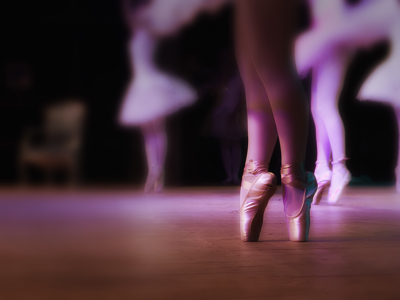
Exploring abuse in Dallas Cowboys Cheerleading and Ballet Schools
Astrid Parrett and Dino Nocivelli consider the body shaming issues raised by the Netflix America’s Sweethearts documentary.
Posted on 17 September 2024
Cheerleading is one of the most iconic symbols of American sport. A Netflix documentary America’s Sweethearts: Dallas Cowboys Cheerleaders unsurprisingly has had many views.
However, when watching the docu-series, a darker side of cheerleading emerged. Unfortunately, the abusive culture of American cheerleading has many similarities to what we see at Leigh Day when we investigate abuse allegations in ballet schools.
Body shaming and pressures
In the documentary, cheerleaders share their struggles with body image and eating disorders, which arguably is worsened (or even caused) by the team’s rigorous and often demeaning standards.
It has been reported that Dallas Cowboys Cheerleaders (DCC) previously had a rulebook which banned weight gain. Unfortunately, the documentary shows that not much has changed.
It has been reported, in other media outlets, that cheerleaders have undergone ‘jiggle tests’ where they perform movements like jumping or running around while others will observe them for any excessive body movement or ‘jiggling’. If a cheerleader’s body is deemed insufficiently firm, they could face penalties, such as fines or suspension from performance.
In the show, the director of DCC Kelli Finglass and choreographer Judy Trammell were filmed directly picking apart the weight gain of new cheerleaders. It is noted on the show that the shorts were custom fitted to each cheerleader and that they would not let out the shorts if the cheerleader gained weight. A cheerleader stated on the show that “you don’t get a new uniform. Once you’re fitted for that uniform, that size is the size that you get. You don’t get to go up. If you go up, they’re like ‘Why does this not fit you?’”.
Former cheerleaders have disclosed that they have developed anorexia from these pressures and severe anxiety due to hard weight expectations. It has been alleged that the organisation provided little support for maintaining healthy nutrition, causing long-term mental health struggles for many cheerleaders.
Unfortunately, at Leigh Day, we see similar things in our investigations into allegations of abuse against various ballet schools. Child dancers are often pressured to achieve and maintain extremely low body weights, leading to eating disorders. For example, one of our clients has reported that she suffered from intense criticism and abuse by her ballet teacher in order to encourage weight loss. Our client still suffers trauma from the abuse today.
Injuries
As a wide body of evidence shows, intense criticism and mental abuse by instructors can push ballet dancers beyond their limits and can lead to injuries. We have seen, in our cases, that overtraining and stress (and poor nutrition) has led to dancers’ injuries.
Likewise, studies have found that cheerleading carries the highest rate of catastrophic injuries to female athletes.
As the docu-series shows, Cheerleaders’ bodies are pushed to the limits and many of them face significant injuries which you would expect an older generation to suffer from. These injuries include hip injuries, arthritis and back pain. Ballet dancers often suffer from similar injuries.
Conclusion
Despite the cheerleaders and ballet dancers going through all this, they are told constantly that their positions are a privilege and one that can be removed at any point.
It is clear, from all allegations and media surrounding both ballet schools and cheerleading, that there needs to be better system in place for addressing abuse and providing resources to victims.
Hopefully, this documentary will spread the word on the toxic culture behind cheerleading and that this will lead to change across all sporting institutions including ballet schools.



